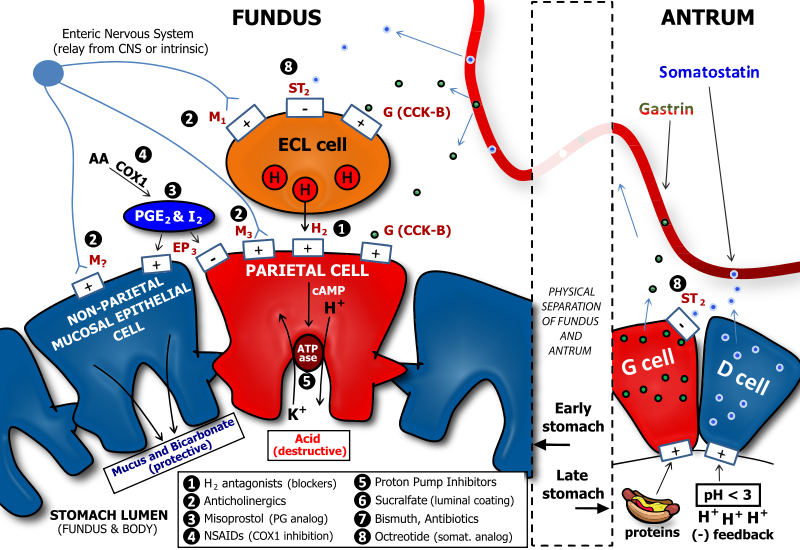Berkas:Determinants of Gastric Acid Secretion.svg

Ukuran pratayang PNG ini dari berkas SVG ini: 800 × 550 piksel Resolusi lainnya: 320 × 220 piksel | 640 × 440 piksel | 1.024 × 704 piksel | 1.280 × 880 piksel | 2.560 × 1.760 piksel | 1.206 × 829 piksel.
Ukuran asli (Berkas SVG, secara nominal 1.206 × 829 piksel, besar berkas: 741 KB)
Riwayat berkas
Klik pada tanggal/waktu untuk melihat berkas ini pada saat tersebut.
| Tanggal/Waktu | Miniatur | Dimensi | Pengguna | Komentar | |
|---|---|---|---|---|---|
| terkini | 16 Januari 2011 11.03 |  | 1.206 × 829 (741 KB) | Vanwa71 | .. |
| 16 Januari 2011 10.57 |  | 1.206 × 829 (486 KB) | Vanwa71 | Reverted to version as of 10:39, 16 January 2011 | |
| 16 Januari 2011 10.55 |  | 1.206 × 829 (1,33 MB) | Vanwa71 | Linked instead of embedded new graphics last time. | |
| 16 Januari 2011 10.39 |  | 1.206 × 829 (486 KB) | Vanwa71 | Reverted to version as of 06:03, 16 January 2011 | |
| 16 Januari 2011 10.37 |  | 1.206 × 829 (437 KB) | Vanwa71 | cool effects | |
| 16 Januari 2011 06.03 |  | 1.206 × 829 (486 KB) | Vanwa71 | Small detail edits. | |
| 16 Januari 2011 05.57 |  | 1.206 × 829 (484 KB) | Vanwa71 | Fixed gastrin and somatostatin flaws | |
| 16 Januari 2011 05.14 |  | 1.206 × 829 (472 KB) | Vanwa71 | Forgot categories. | |
| 16 Januari 2011 05.11 |  | 1.206 × 829 (472 KB) | Vanwa71 | I finally started using my head, and converted all the text to outlines to keep it exactly as I wanted it. | |
| 16 Januari 2011 05.05 |  | 1.206 × 829 (214 KB) | Vanwa71 | Please bear with me, I finally looked up websafe fonts instead of trial and error. Let's hope this works. |
Penggunaan berkas
Halaman berikut menggunakan berkas ini:
Penggunaan berkas global
Wiki lain berikut menggunakan berkas ini:
- Penggunaan pada el.wikipedia.org
- Penggunaan pada en.wikipedia.org
- Penggunaan pada fr.wikipedia.org
- Penggunaan pada hi.wikipedia.org
- Penggunaan pada ja.wikipedia.org
- Penggunaan pada ko.wikipedia.org
- Penggunaan pada sq.wikipedia.org
- Penggunaan pada te.wikipedia.org
- Penggunaan pada zh.wikipedia.org
- Penggunaan pada zh.wikibooks.org
